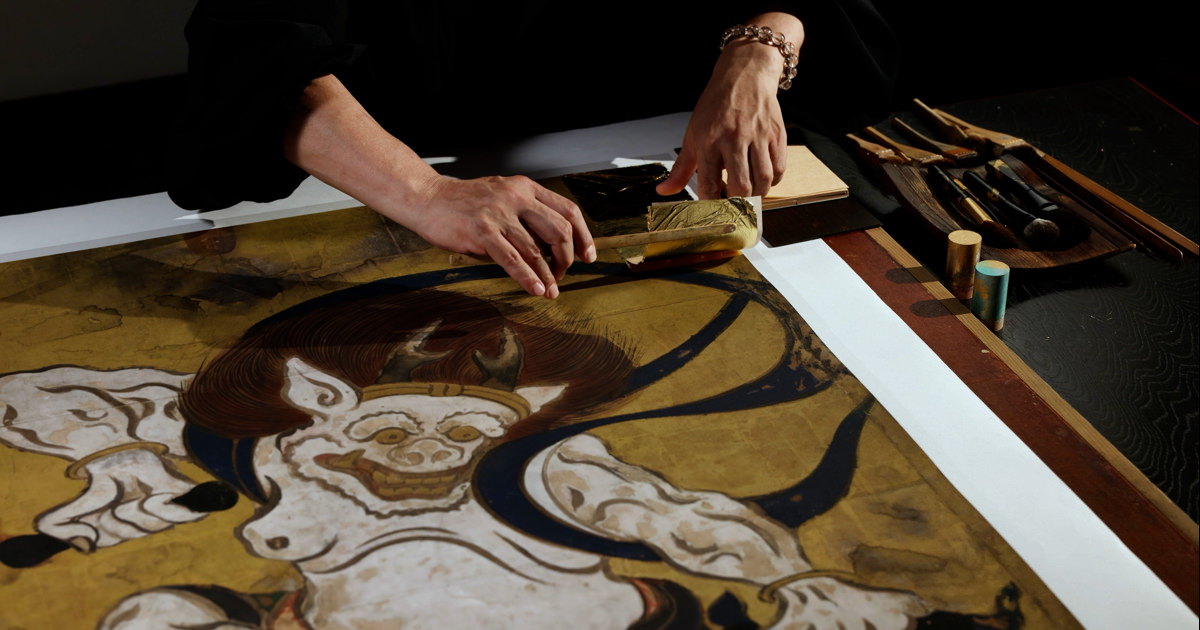Kabuki Theater
High-resolution facsimiles
- Material
- printed, gold on washi paper
- Period of creation
- Tsuzuri Project Stage 13 2019–2020
- Recipient
- Tokyo National Museum(National Institutes for Cultural Heritage)
Original
- Cultural property designation
- Important Cultural Property
- Artist
- Hishikawa Moronobu
- Historical era
- Edo (17th century)
- Material
- ink, color, and gold on washi paper
- Medium
- Pair of six-fold screens
- Size
- Each Screen H165.8 × W366.4 cm
- Collection
- Tokyo National Museum
Description
This work comes from a set of two 6-panelled folding screens. Painted by Hishikawa Moronobu, an ukiyo-e artist from the early Edo period, it depicts a theater used for performances of kabuki, one of Japan‘s traditional performing arts. The entrance of the theater is shown on the right. Signboards on either side of the entrance list the performances, while several men tout for customers. The stage lies beyond the entrance. On it, the entire cast is dancing flamboyantly. The audience is chatting, laughing, and generally having a riotous time as it sits watching from the floor. One child is seated on his mother's lap while another mother is breastfeeding. On both sides of the stage, ladies of high standing watch through bamboo blinds alongside men sitting separately behind folding screens. These are probably the best seats in the house. The facial expressions, gestures, and fashions of the performers and audience are depicted in a vivid, meticulous fashion.
The right of the screen depicts the theater dressing room. It shows familiar backstage scenes of face washing, hair styling, costume donning, and tea making, for instance. In a teahouse adjoining the dressing room on the left, people dance to a musical accompaniment. Some people watch while drinking alcohol, while others gaze at the cherry blossoms. This seems to be a special salon for actors to receive guests. The setting is somewhat different to the regular stage for general customers. This vibrant work depicts each individual in vivid fashion. At 170 centimeters high, the screen is around 20 centimeters larger than usual. This also suggests it was made by special commission.
— Cited from Colbase




